Key takeaways
- Activist teacher resources promote critical thinking and empower students to engage with real-world issues, transforming classrooms into spaces of dialogue.
- Debate enhances students’ critical thinking and empathy, building confidence and encouraging active participation in discussions on relevant topics.
- Resolution 2023 serves as an effective framework for debate, providing accessible yet challenging topics that resonate with students and foster meaningful conversations.
- Involving students in creating debate materials and structuring discussions promotes ownership and deeper engagement in the learning process.

Understanding activist teacher resources
Activist teacher resources are more than just lesson plans or teaching aids; they are tools that spark critical thinking and encourage students to engage with real-world issues. When I first explored these resources, I realized they made my classroom a space of dialogue, not just instruction. Have you ever noticed how powerful a simple question can be in shifting a student’s perspective?
These resources often come from a place of passion and urgency, reflecting the ongoing social and political challenges we face. I remember feeling both inspired and overwhelmed the first time I tried to introduce such materials—I wanted to do justice to the topics but also feared overwhelming my students. What I found helpful was to start small and let curiosity lead the conversation.
Understanding activist teacher resources means recognizing their potential to empower both educators and learners. They encourage us to move beyond traditional teaching methods and create experiences that resonate emotionally and intellectually. For me, this shift transformed not only how I teach but also how I see my role as an educator within a larger community.
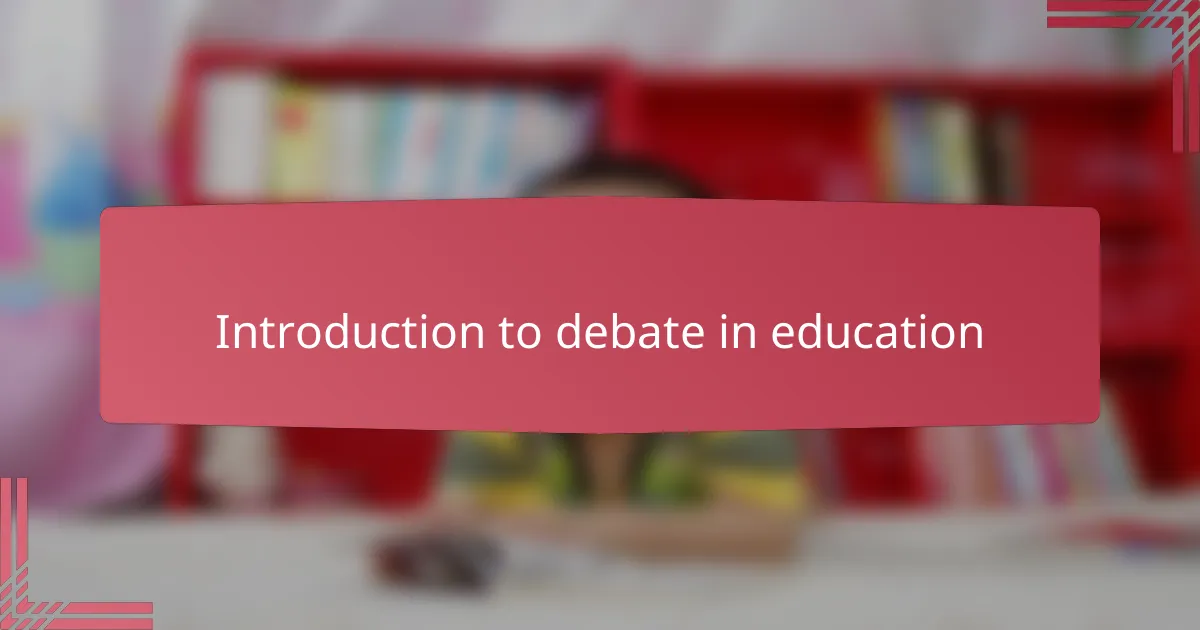
Introduction to debate in education
Debate in education is more than just a classroom activity; it’s a dynamic way to bring ideas to life and challenge students to think deeply. When I first introduced debate, I noticed how quickly students went from passive listeners to active participants, eager to defend their viewpoints. Have you ever witnessed that spark when a student realizes their voice truly matters?
Starting with debate felt a bit daunting—I worried about managing the flow and ensuring everyone felt comfortable. But I soon saw that debate creates a unique space where curiosity thrives, and students learn to listen as much as they speak. It was like watching walls come down as students wrestled respectfully with complex ideas.
What makes debate so powerful in education is its ability to build critical thinking and empathy simultaneously. From my experience, it not only sharpens reasoning skills but also helps students understand perspectives different from their own, which feels essential in today’s polarized world. Isn’t that what education should ultimately strive for?
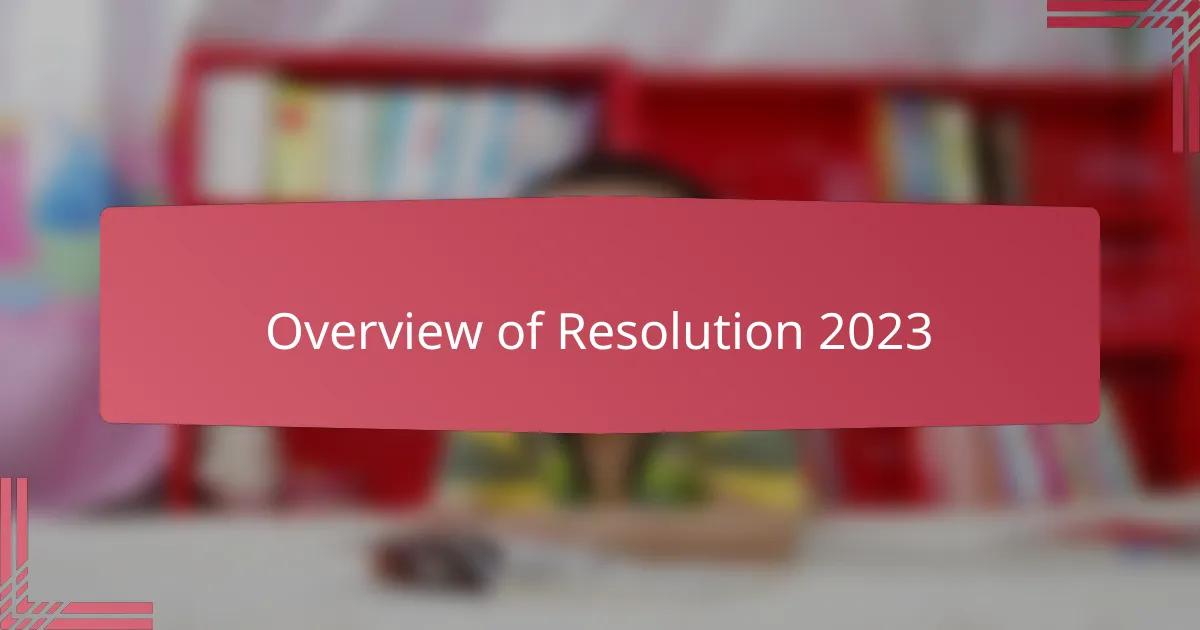
Overview of Resolution 2023
Resolution 2023 stood out to me as a timely and compelling framework to introduce debate because it tackled issues that mattered deeply to my students. When I first presented the resolution, I saw their eyes light up—not just with interest, but with a genuine eagerness to engage. Have you ever noticed how speaking about something relevant can transform a hesitant student into a passionate debater?
What struck me most about Resolution 2023 was its clarity and focus. It provided a concrete topic that was both accessible and challenging, allowing students to explore complex ideas without feeling lost. This balance gave me the confidence to guide discussions that felt meaningful rather than forced.
In my experience, using Resolution 2023 created a sense of urgency and relevance in the classroom. It wasn’t just an academic exercise; it became a platform for students to voice their concerns and practice activism through dialogue. I found myself learning alongside them, reminded of why debate can be a catalyst for change.
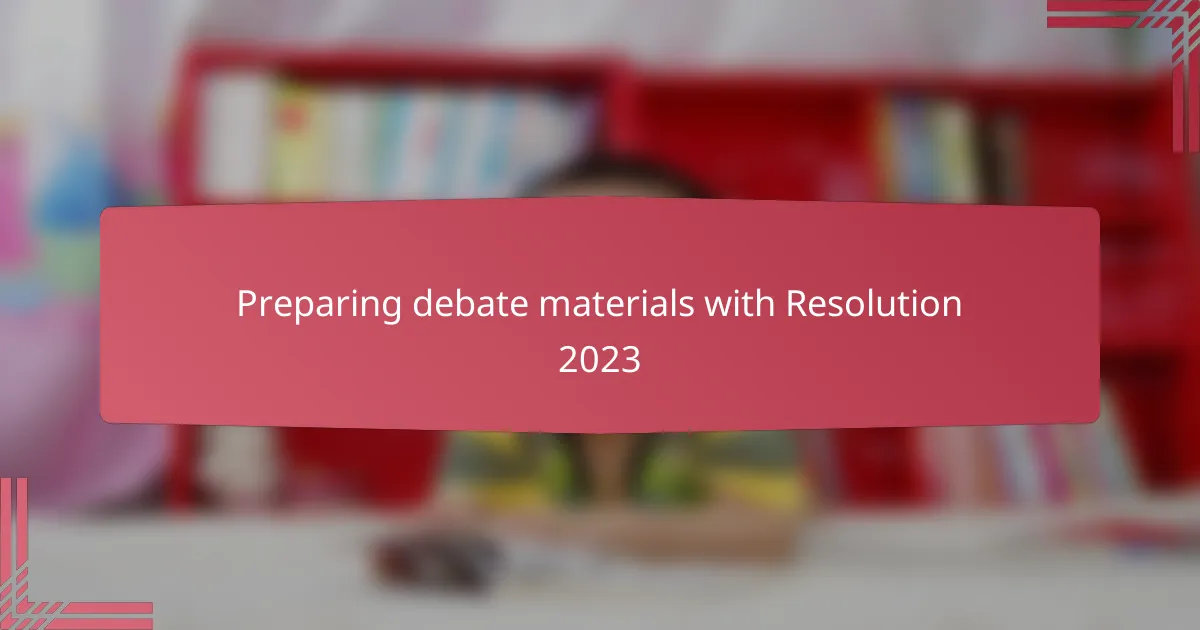
Preparing debate materials with Resolution 2023
When I began preparing debate materials using Resolution 2023, I focused on breaking down the resolution into manageable parts that my students could really grasp. Have you ever noticed how a well-structured outline can transform a complex topic into an exciting challenge? That clarity made all the difference in sparking their enthusiasm.
I found it helpful to gather a variety of sources—articles, videos, and firsthand accounts—that connected directly to the themes in Resolution 2023. This mix not only grounded the debate in real-world contexts but also gave students multiple angles to consider, making their arguments more nuanced and confident.
One surprise for me was how involving students in creating their own supporting materials deepened their engagement. When they researched and brought personal insights to the table, the debate shifted from a classroom assignment to a shared exploration. Doesn’t that kind of ownership change the whole dynamic?
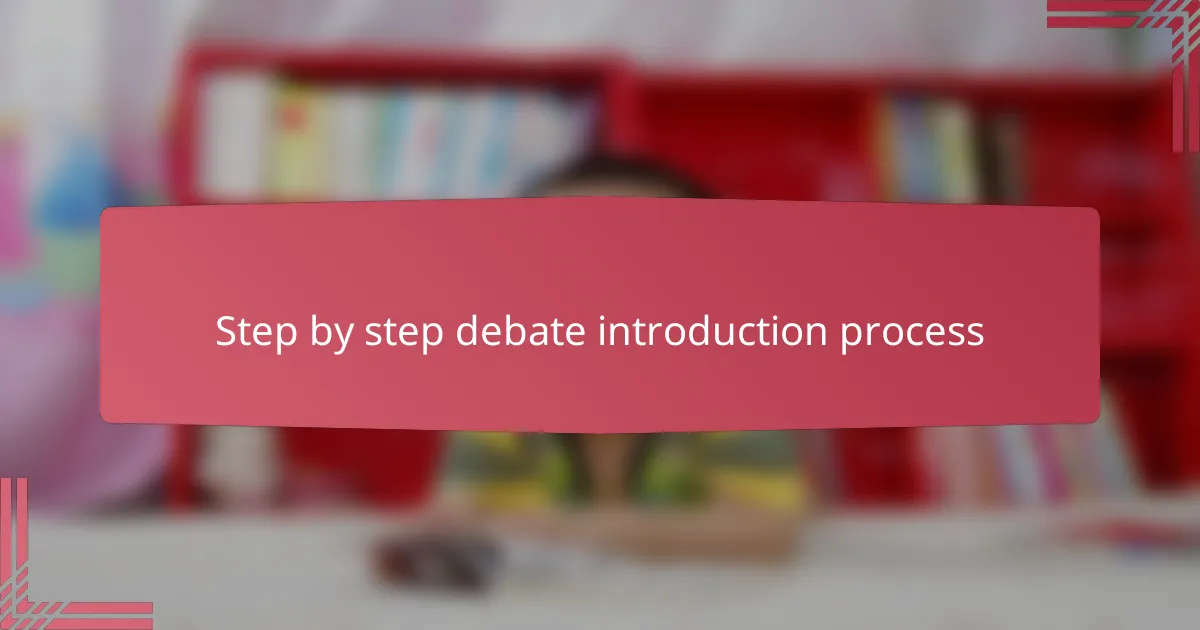
Step by step debate introduction process
Introducing debate step by step felt like guiding my students into unfamiliar territory without leaving them lost. I started by clearly explaining the purpose of the debate and the format we’d follow—it helped ease their nerves and set expectations. Have you ever noticed how simply knowing the “rules of the game” can turn anxiety into excitement?
Next, I modeled a mini-debate based on a simple point from Resolution 2023. Watching me take different sides gave students a concrete example of how arguments unfold, which made the process less intimidating. It was rewarding to see their curiosity grow as they asked questions about strategies and evidence—proof that modeling truly lights the way.
Finally, I divided the class into small groups to discuss their initial thoughts, encouraging them to listen as much as they spoke. This step felt crucial to me because it created a safe space where ideas could be tested without judgment. Doesn’t starting small and nurturing confidence feel like the best way to build critical thinking skills?
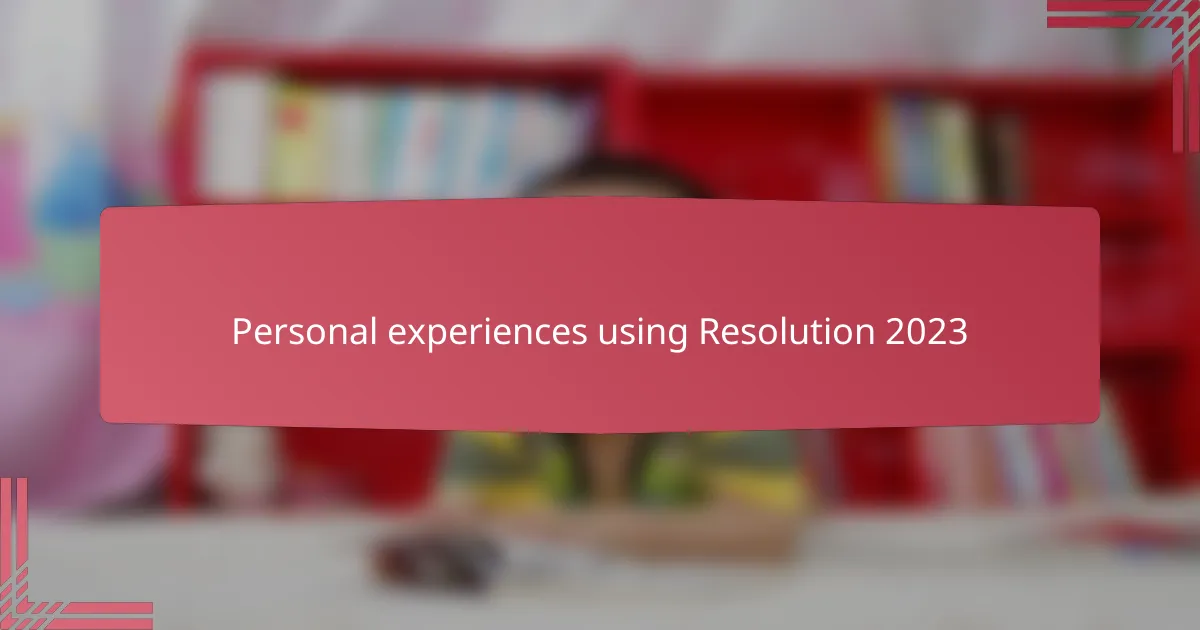
Personal experiences using Resolution 2023
Using Resolution 2023 in my classroom felt like opening a door to vibrant and meaningful conversations. I remember one debate session where a usually quiet student surprised everyone by passionately defending a perspective I hadn’t anticipated. Have you ever experienced that moment when a student’s confidence blossoms unexpectedly? It reminded me why introducing relevant topics makes all the difference.
The first time I guided students through Resolution 2023, I noticed how the clear framework helped them channel their thoughts without feeling overwhelmed. It was rewarding to watch their arguments gain depth, especially when they connected the resolution’s themes to their own lives. That connection, I believe, is what transforms debate from an abstract exercise into a personal journey.
Sometimes, I struggled with keeping the debates balanced, ensuring every voice was heard, especially with such a charged topic. Yet, those moments taught me about patience and the importance of fostering a respectful environment. Isn’t it fascinating how managing these dynamics becomes as much a part of the learning as the debate itself?